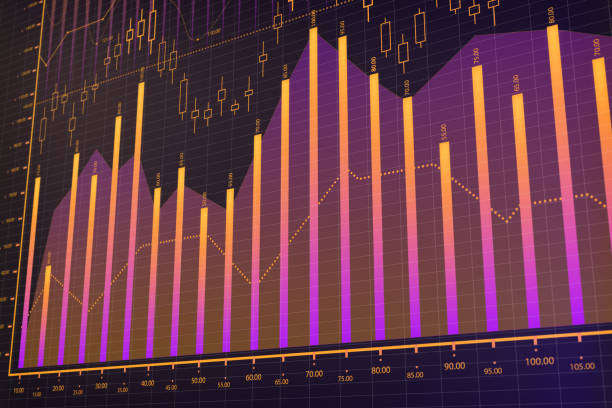Intraday Chart Patterns: A Guide to Spotting Profitable Trading Opportunities

Identifying Trend Reversal Patterns
Trend reversal patterns are essential tools for traders and investors looking to identify potential shifts in market direction. These patterns typically indicate a change in the prevailing trend and can offer valuable insights into when to enter or exit positions. Common trend reversal patterns include double tops and bottoms, head and shoulders formations, and rounding tops and bottoms. By recognizing these patterns early on, traders can anticipate potential reversals and adjust their strategies accordingly.
One key aspect to consider when identifying trend reversal patterns is to look for confirmation signals such as volume spikes or changes in momentum. These additional indicators can help strengthen the validity of the pattern and provide further conviction for traders to make informed decisions. It is crucial for traders to exercise patience and wait for the pattern to fully develop before taking action, as premature entries can lead to false signals and unnecessary losses.
Understanding Continuation Patterns
Continuation patterns in technical analysis signal that the prevailing trend is likely to continue after a temporary pause or consolidation. These patterns indicate that market participants are taking a breather before resuming the existing price direction. Understanding these patterns can help traders anticipate potential price movements and make informed trading decisions.
Common continuation patterns include flags, pennants, wedges, and rectangles. Flags and pennants are characterized by a brief consolidation phase after a sharp price movement, forming a flagpole followed by a flag or pennant shape. Wedges show converging trendlines that suggest a temporary pause before the trend resumes. Rectangles are sideways consolidation patterns indicating a temporary pause in the market before the previous trend continues. Being able to recognize these patterns can enhance a trader’s ability to identify high-probability trading opportunities based on the continuation of the prevailing trend.
Online trading platform is a crucial tool for traders looking to engage in the financial markets. With the help of an online trading platform, users can access real-time market data, place trades, and manage their investment portfolios from the convenience of their smartphones or computers. These platforms offer a wide range of trading instruments, including stocks, forex, commodities, and cryptocurrencies, allowing traders to diversify their investment strategies and capitalize on market opportunities. Whether you are a beginner or an experienced trader, an online trading platform can provide the necessary tools and resources to help you navigate the complexities of the financial markets and achieve your trading goals.
Recognizing Support and Resistance Levels
Support and resistance levels are crucial technical indicators used by traders to identify potential turning points in the market. Support is a price level where a downtrend may pause or reverse, as buying interest increases. Resistance, on the other hand, is a price level where an uptrend may encounter selling pressure, causing the price to stall or reverse. These levels are often identified by previous highs and lows on a price chart, forming horizontal lines that indicate areas where the market has struggled to move beyond in the past.
When recognizing support and resistance levels, traders look for areas where price tends to bounce or reverse direction consistently. These levels can act as psychological barriers for market participants, influencing their buying and selling decisions. By identifying these key levels, traders can anticipate potential price movements and adjust their trading strategies accordingly. It is essential to consider multiple time frames when identifying support and resistance levels to get a comprehensive view of the market dynamics and make well-informed trading decisions.
Analyzing Candlestick Patterns
Candlestick patterns are a crucial tool in technical analysis that helps traders identify potential market reversals and trends. These patterns are formed by the open, high, low, and close prices of an asset within a specific time frame, typically depicted in candlestick charts. By examining the shape, size, and color of the candles, traders can gain valuable insights into market sentiment and potential future price movements.
One of the most common candlestick patterns is the “hammer,” which appears at the end of a downtrend and signals a potential reversal to the upside. The hammer consists of a small body with a long lower shadow, indicating that buyers have stepped in to push the price higher after a period of selling pressure. Conversely, the “shooting star” pattern signifies a potential reversal to the downside and is characterized by a small body with a long upper shadow, suggesting that sellers have taken control after an uptrend. By learning to recognize these and other candlestick patterns, traders can enhance their ability to make informed trading decisions.
Utilizing Moving Averages
Moving averages are a popular technical analysis tool used by traders and investors to identify trends and potential entry or exit points in the market. By smoothing out price fluctuations over a specified period of time, moving averages help in visually depicting the direction in which an asset’s price is moving. The two most commonly used types of moving averages are the simple moving average (SMA) and the exponential moving average (EMA), each offering its own set of advantages and drawbacks.
The simple moving average is straightforward to calculate, as it sums up the closing prices of a specific number of periods and then divides by the number of periods. On the other hand, the exponential moving average assigns more weight to recent price data, making it more responsive to current price movements. Traders often use moving averages in conjunction with other technical indicators to confirm trends and make informed trading decisions.
Spotting Breakout Patterns
Breakout patterns in technical analysis signal a potential shift in market sentiment, typically indicating a decisive move beyond a key level of support or resistance. Understanding breakout patterns involves analyzing price movements to identify significant breakouts that may lead to strong upward or downward momentum. Traders often look for confirmation through high trading volume accompanying the breakout, providing validation for the potential trend reversal or continuation.
One common breakout pattern is the “bullish breakout,” where the price breaks above a resistance level, suggesting a potential upward trend. Conversely, a “bearish breakout” occurs when the price breaches a support level, indicating a possible downtrend. Traders utilize breakout patterns as signals to enter or exit positions, aiming to capitalize on the momentum generated by the breakout. By incorporating breakout patterns into their analysis, traders can enhance their decision-making process and adapt their strategies to market dynamics.
When it comes to identifying breakout patterns in the market, traders can benefit from diversifying their investment portfolio with mutual funds. Mutual funds offer a convenient way to access a diversified range of assets, providing exposure to various sectors and industries. By incorporating mutual funds into their investment strategy, traders can potentially mitigate risk and maximize returns over the long term. For those looking to explore mutual funds further, consider downloading the CloudTradeTech app to access a wide selection of mutual funds and track their performance seamlessly. Mutual funds can serve as a valuable tool for investors seeking to capitalize on breakout patterns and navigate market volatility effectively.
Interpreting Volume Indicators
Volume indicators play a crucial role in technical analysis as they offer valuable insights into market activity. As the saying goes, “volume precedes price” – a surge in trading volume often indicates a strong interest from market participants. By analyzing volume alongside price movements, traders can confirm the strength of a trend or potentially predict a reversal. For instance, a significant increase in volume during a price uptrend suggests strong buying pressure, validating the bullish outlook.
On the other hand, low volume during a price rally may indicate weak momentum and lack of conviction among traders, raising concerns about the sustainability of the trend. Volume indicators can also help identify potential turning points in the market. A divergence between price action and volume – where prices are moving in one direction while volume weakens – could signal a trend reversal. Likewise, a sudden spike in volume at key support or resistance levels may hint at a potential breakout or reversal in the making.
Applying Fibonacci Retracement Levels
Fibonacci retracement levels are a valuable tool used in technical analysis to identify potential areas of support and resistance in a financial market. These levels are based on key Fibonacci ratios, such as 23.6%, 38.2%, 50%, 61.8%, and 100%, which are drawn on a price chart to highlight potential reversal points. Traders often use Fibonacci retracement levels to determine possible entry and exit points for their trades based on the assumption that prices tend to retrace a portion of the previous move before continuing in the original direction.
When applying Fibonacci retracement levels, it is important to look for confluence with other technical indicators or patterns to increase the probability of a successful trade. Traders commonly combine Fibonacci retracement levels with other tools, such as trendlines, moving averages, or candlestick patterns, to strengthen their analysis and make more informed trading decisions. By incorporating Fibonacci retracement levels into their technical analysis arsenal, traders can gain a better understanding of potential price levels where the market may pause or reverse, helping them to plan their trades more effectively.
Using Technical Indicators for Confirmation
Technical indicators play a crucial role in confirming potential trends in the market. These indicators provide additional insight and confirmation to help traders make more informed decisions. By combining technical indicators with other forms of analysis, traders can gain a more comprehensive understanding of market movements.
Popular technical indicators include the Relative Strength Index (RSI), Moving Average Convergence Divergence (MACD), and Stochastic Oscillator. These indicators help traders confirm the strength and direction of a trend, identify overbought or oversold conditions, and pinpoint potential entry and exit points. It is important for traders to understand how each indicator works and how to interpret the signals they provide in order to effectively use them for confirmation in their trading strategies.
Implementing Risk Management Strategies
Risk management is a crucial aspect of successful trading in any financial market. One of the key strategies in managing risk is setting stop-loss orders. By placing a stop-loss order, traders can limit potential losses by automatically selling a position once it reaches a predetermined price level. This technique helps traders control the amount of capital they are willing to risk on a single trade, preventing significant losses in case the market moves against their position.
Another effective risk management strategy is diversification. Diversifying a trading portfolio by investing in various asset classes or using different trading strategies can help spread risk and reduce exposure to any single market or asset. By diversifying, traders can mitigate the impact of potential losses on one particular trade or asset, as losses in one part of the portfolio may be offset by gains in another. This approach can help protect overall capital and ensure more stable trading performance over the long term.



